

Tikal
Photos from 1988
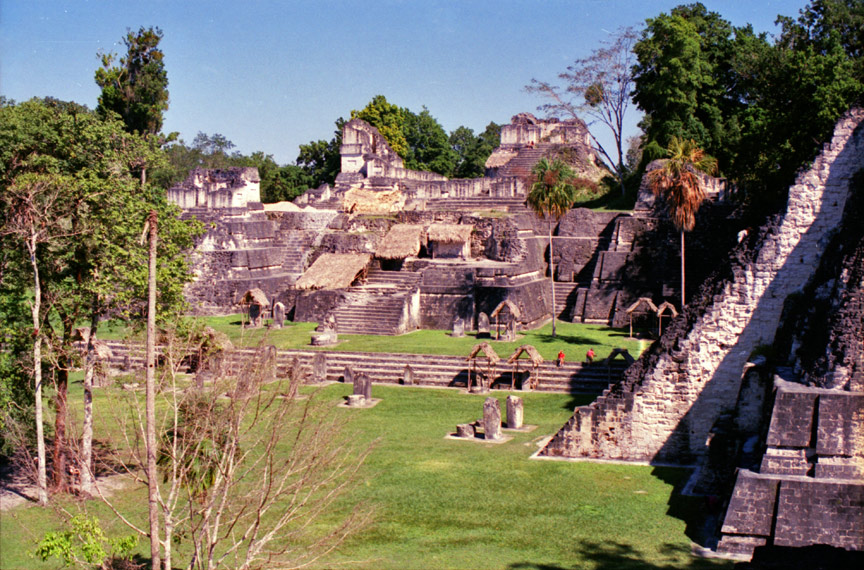
Tikal has been partially restored by the University of Pennsylvania and the government of Guatemala. It was one of the largest of the Classic period Maya cities and was one of the largest cities in the Americas. The architecture of the ancient city is built from limestone and includes the remains of temples that tower over 70 metres (230 ft) high, large royal palaces, in addition to a number of smaller pyramids, palaces, residences, administrative buildings, platforms and inscribed stone monuments. There is even a building which seemed to have been a jail, originally with wooden bars across the windows and doors. There are also seven courts for playing the Mesoamerican ballgame, including a set of 3 in the Seven Temples Plaza, a unique feature in Mesoamerica.
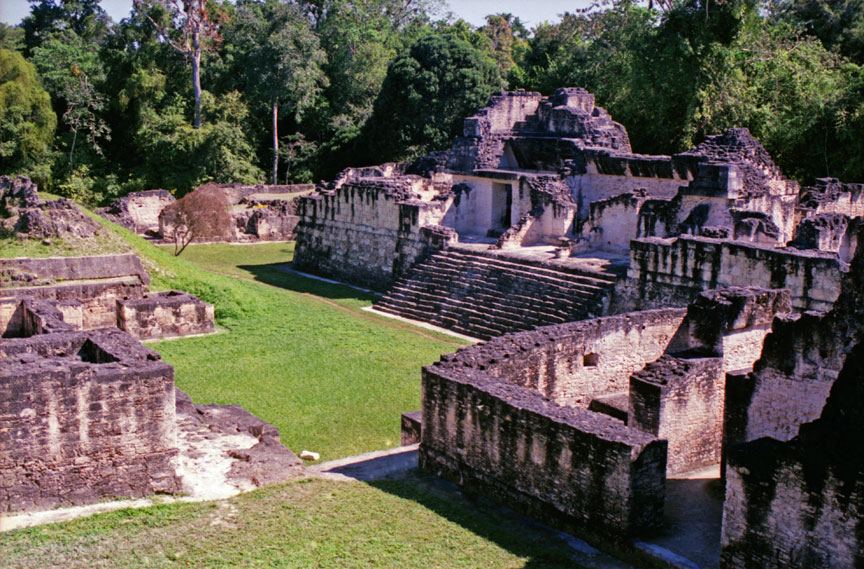
The limestone used for construction was local and quarried on-site. The
depressions formed by the extraction of stone for building were plastered to
waterproof them and were used as reservoirs, together with some waterproofed
natural depressions. The main plazas were surfaced with stucco and laid at a
gradient that channelled rainfall into a system of canals that fed the
reservoirs.
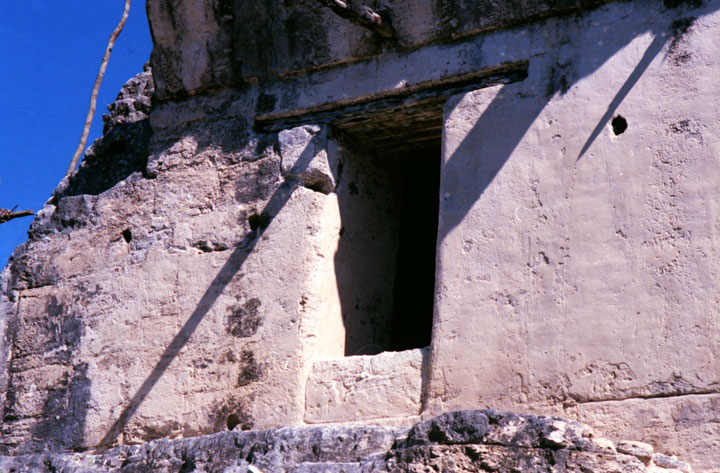
The residential area of Tikal covers an estimated 60 square kilometres (23 sq
mi), much of which has not yet been cleared, mapped, or excavated. A huge set of
earthworks has been discovered ringing Tikal with a 6-metre (20 ft) wide trench
behind a rampart. The 16 square kilometres (6.2 sq mi) area around the site core
has been intensively mapped; it may have enclosed an area of some 125 square
kilometres (48 sq mi) (see below). Population estimates place the demographic
size of the site between 100,000 and 200,000. Recently, a project exploring the
defensive earthworks has shown that the scale of the earthworks is highly
variable and that in many places it is inconsequential as a defensive feature.
In addition, some parts of the earthwork were integrated into a canal system.
The earthwork of Tikal varies significantly in coverage from what was originally
proposed and it is much more complex and multifaceted than originally thought.
Text from Wikipedia
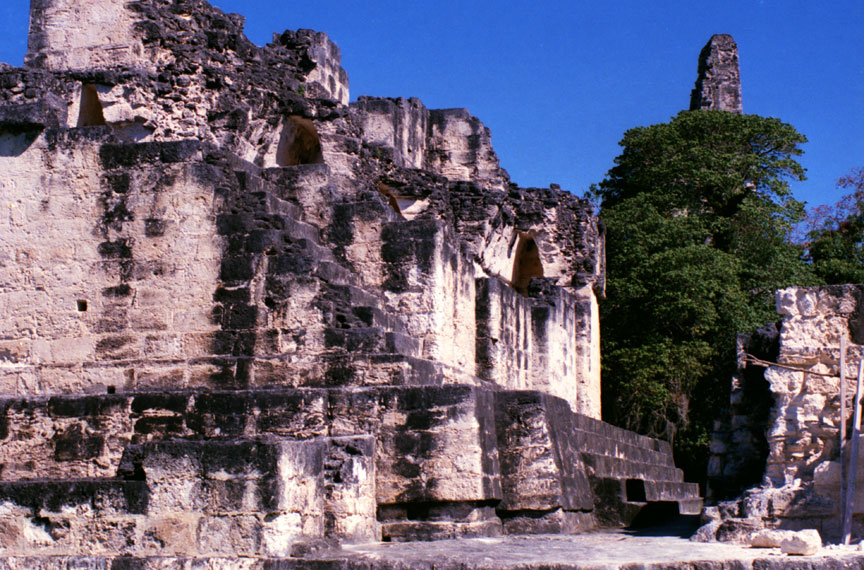
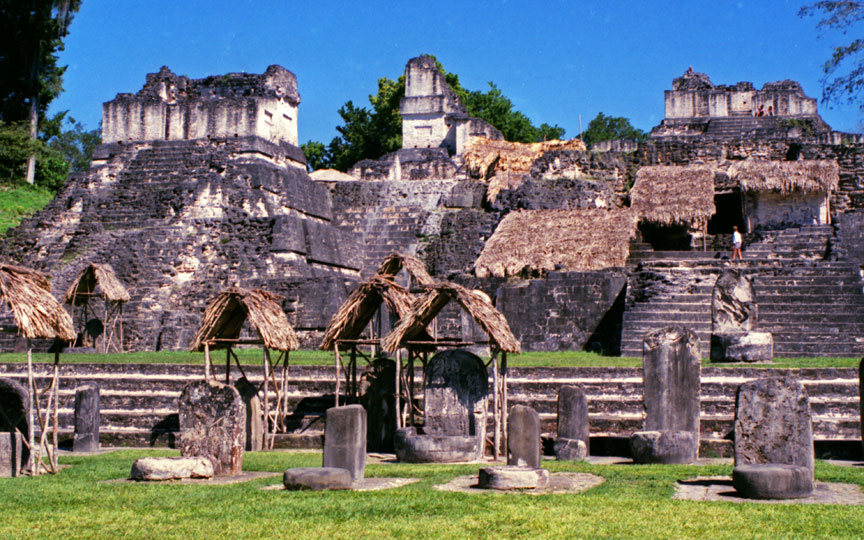

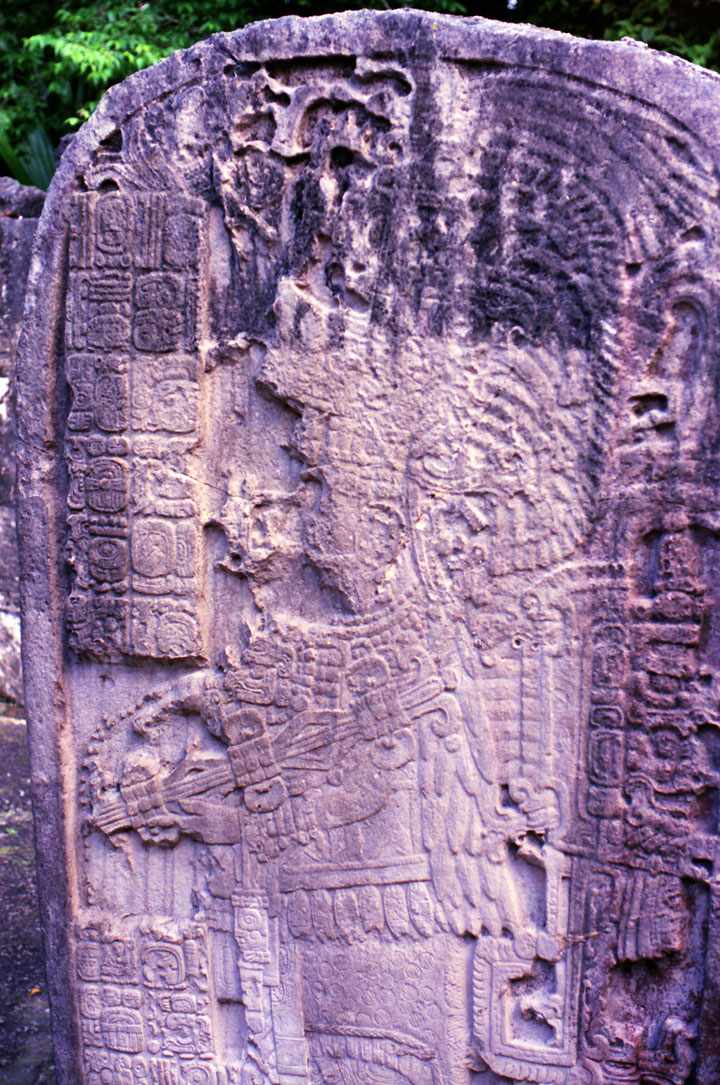
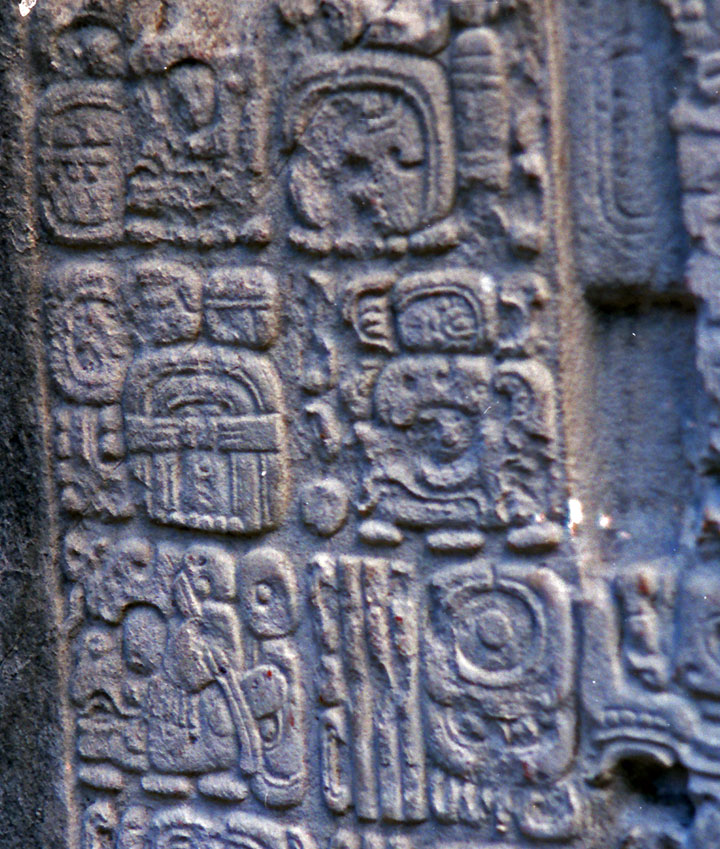


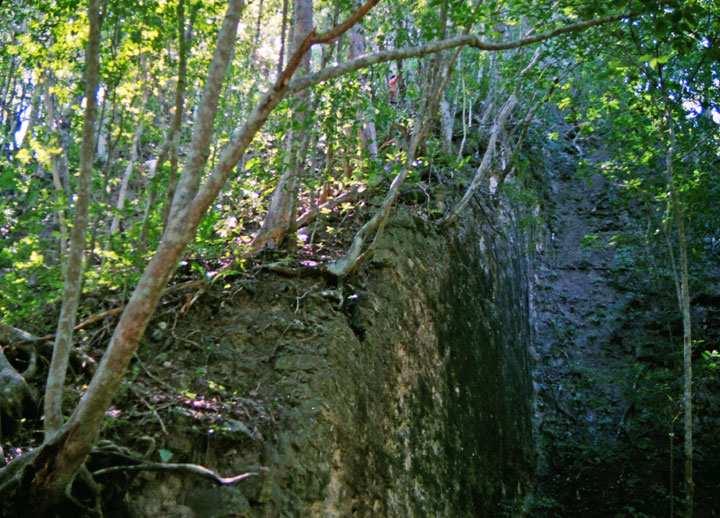
as of yet uncovered
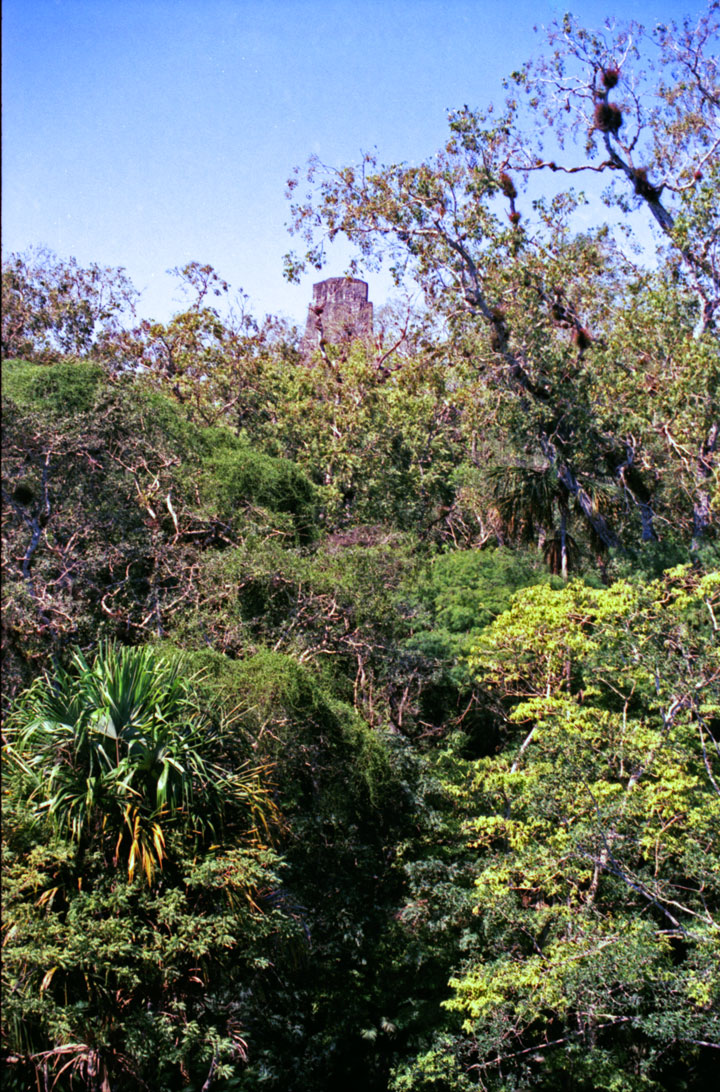
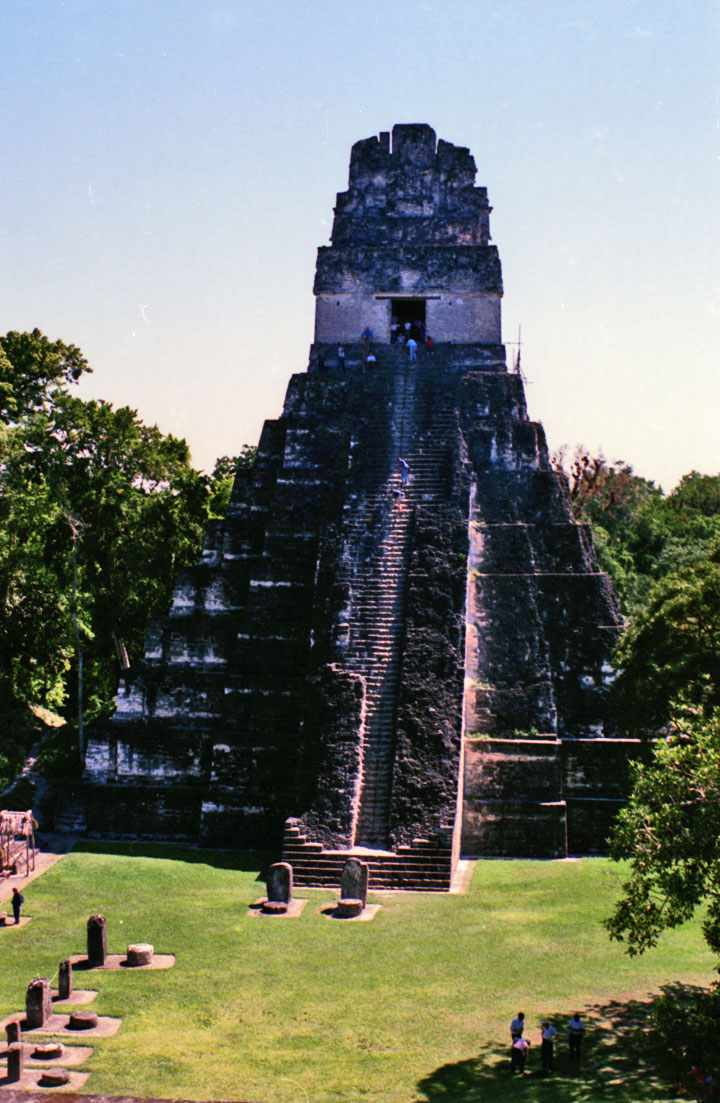
Temple on the main plaza
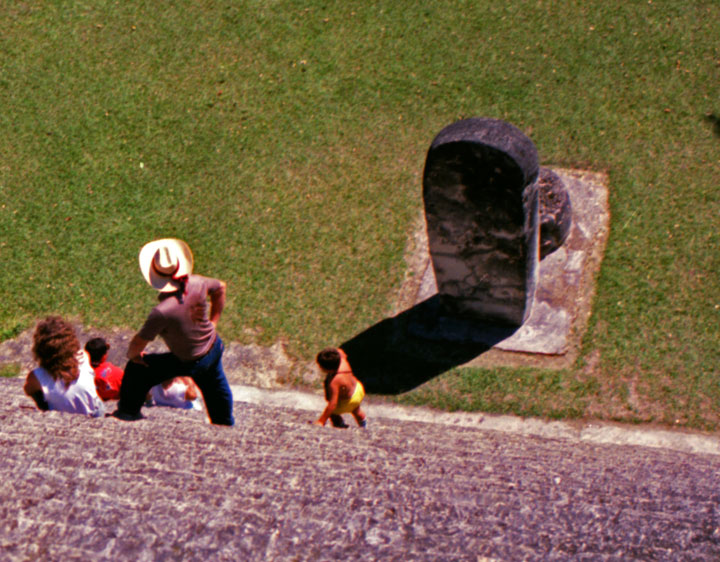
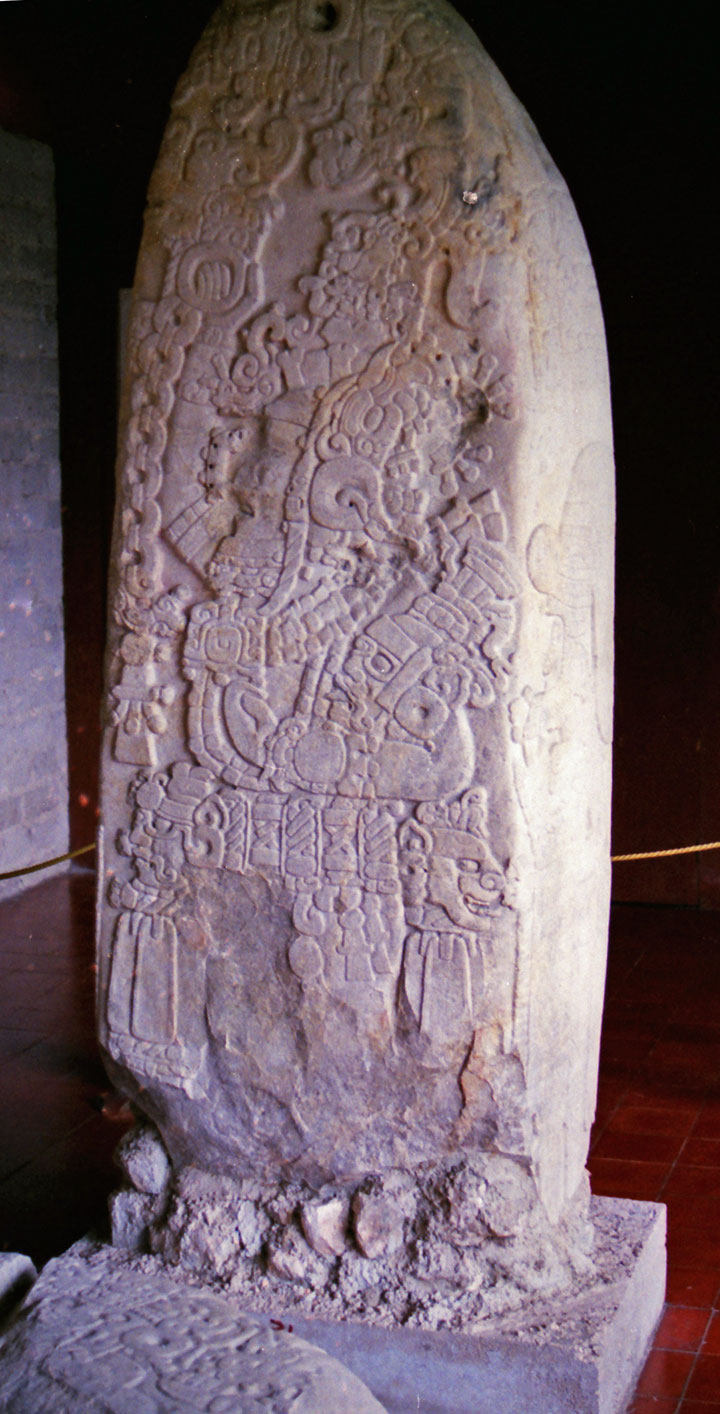
Stela, with the sculpted image of Siyah Chan K'awil II
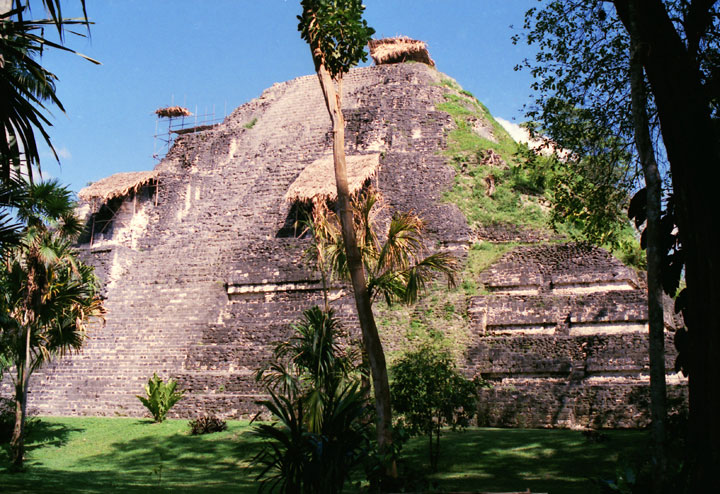
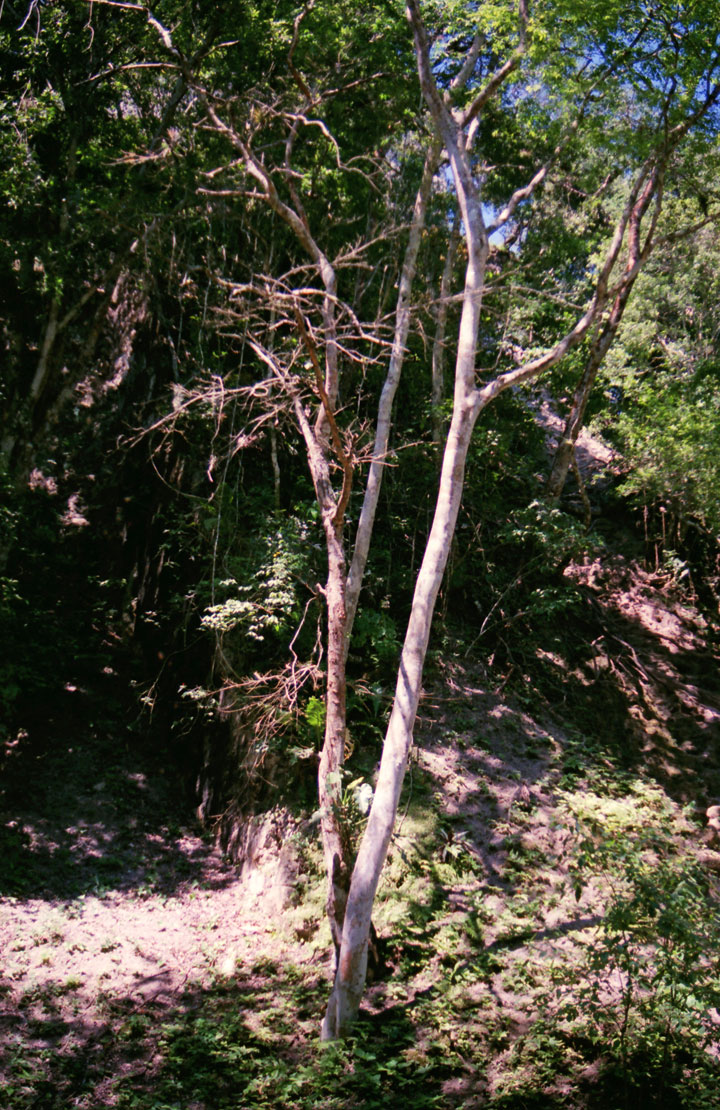
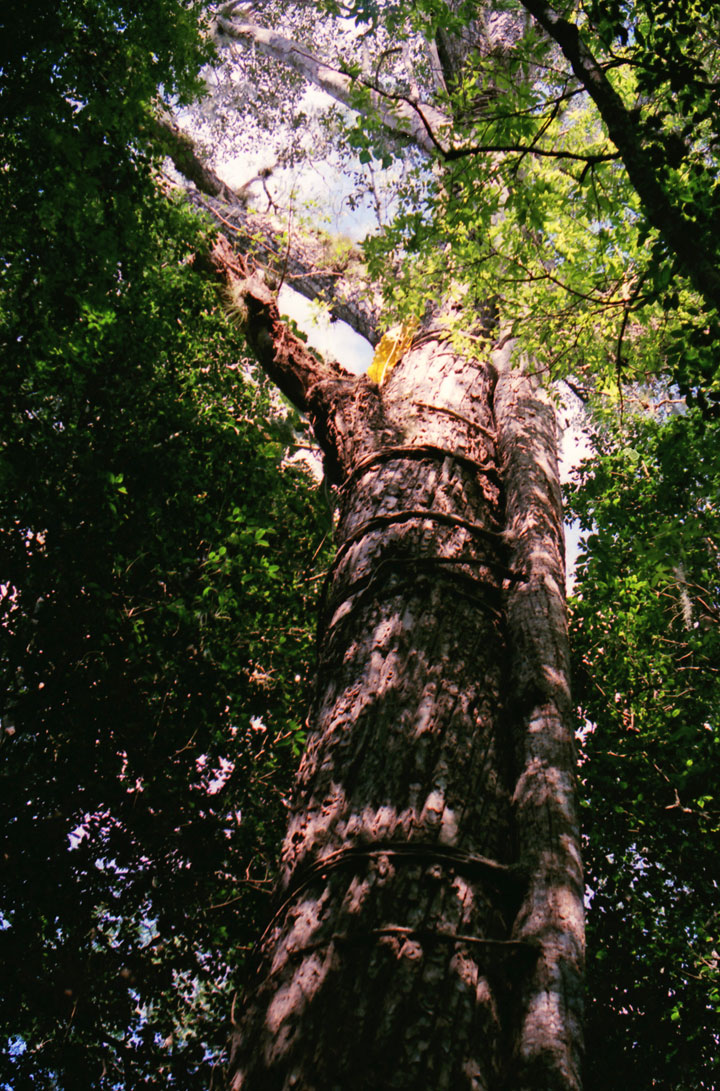
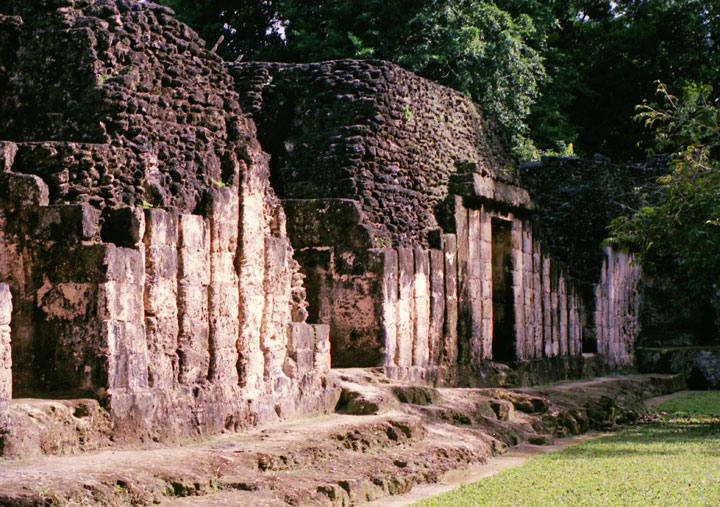
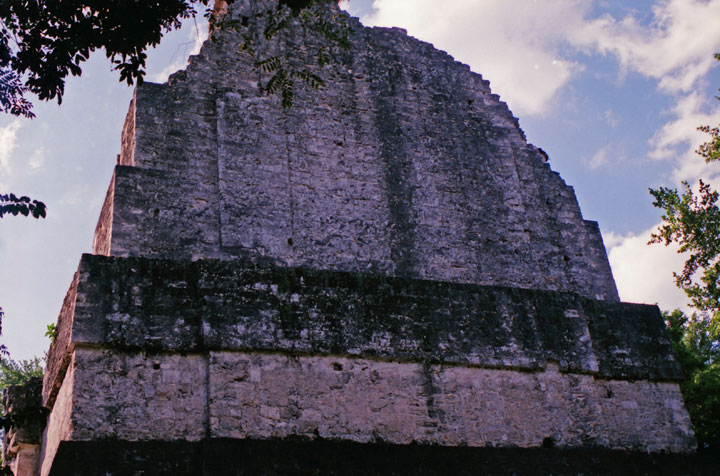
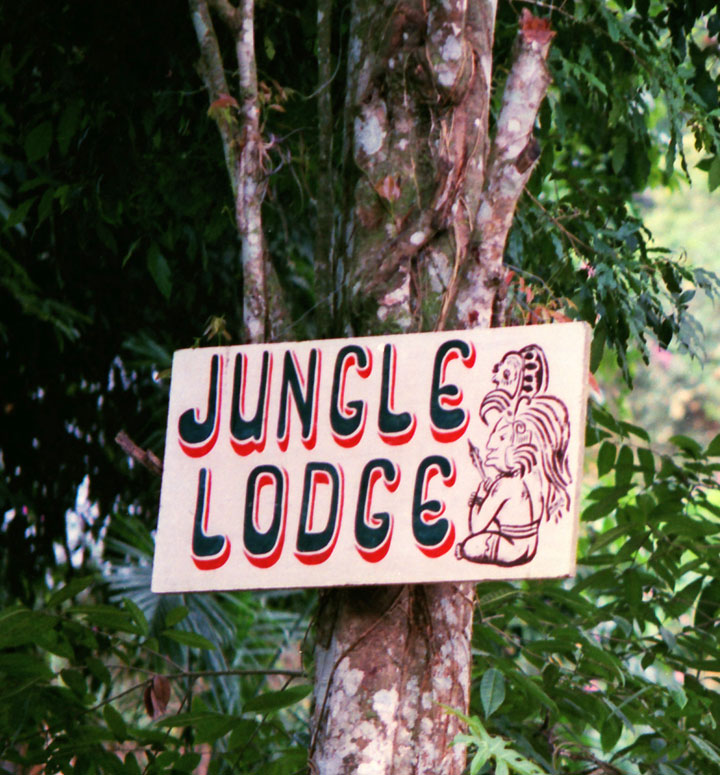
overnight lodging
very primitive in 1988
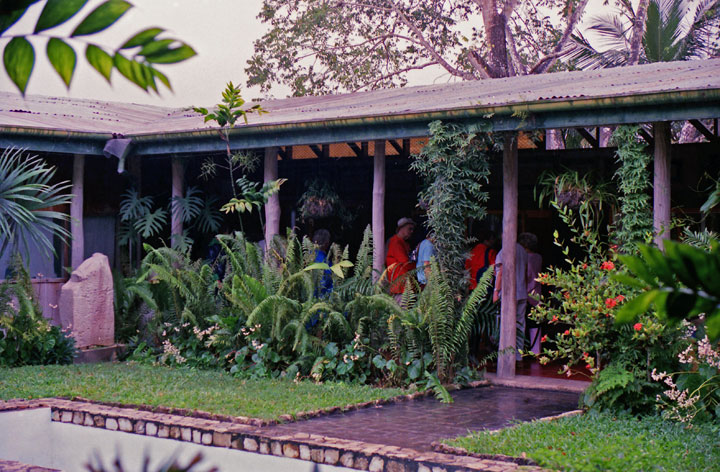
Tikal Museum
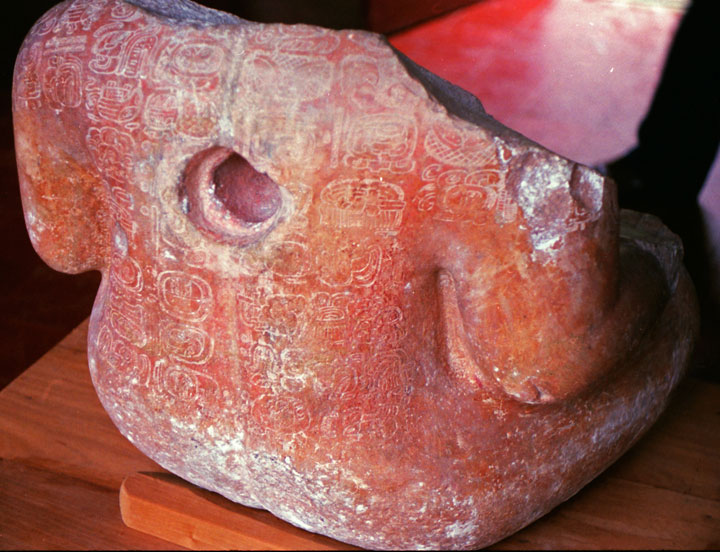

Dr. George Stuart, National
Geographic
photographing with his Mayan language chart
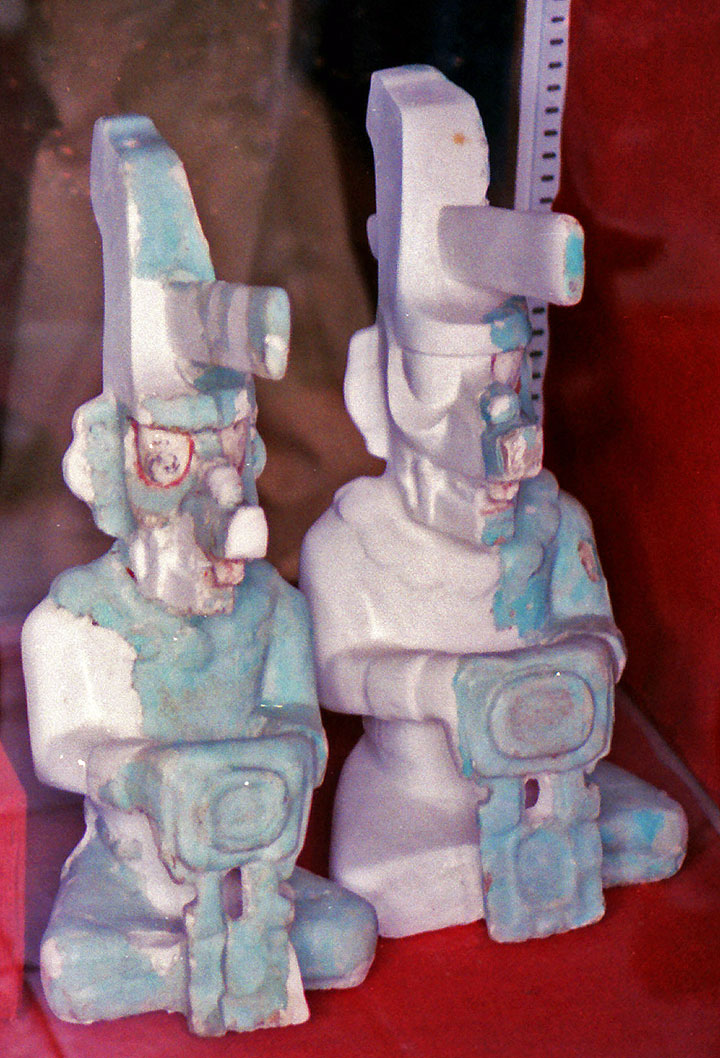
Flores
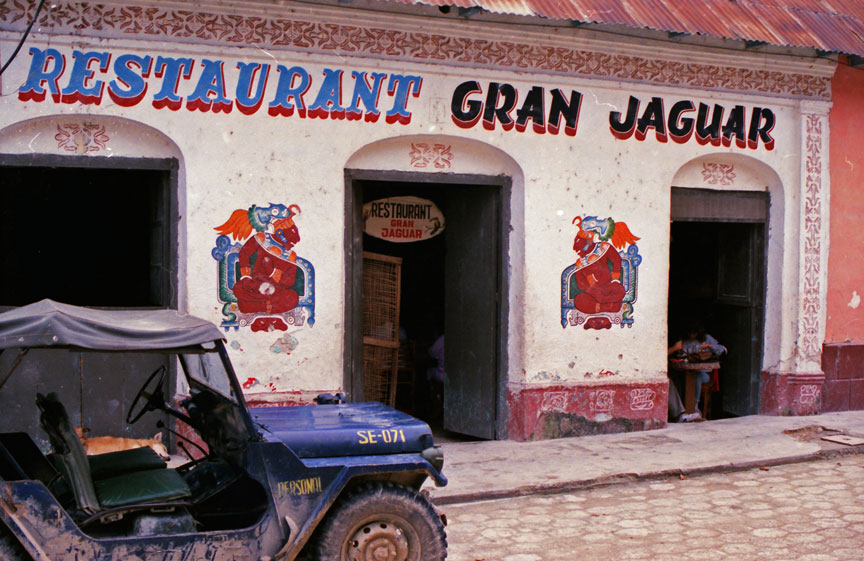
local restaurant
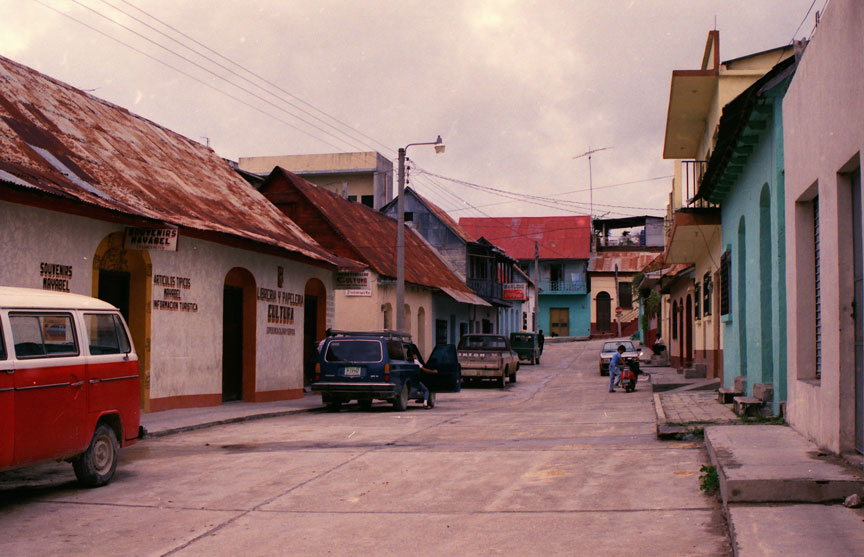
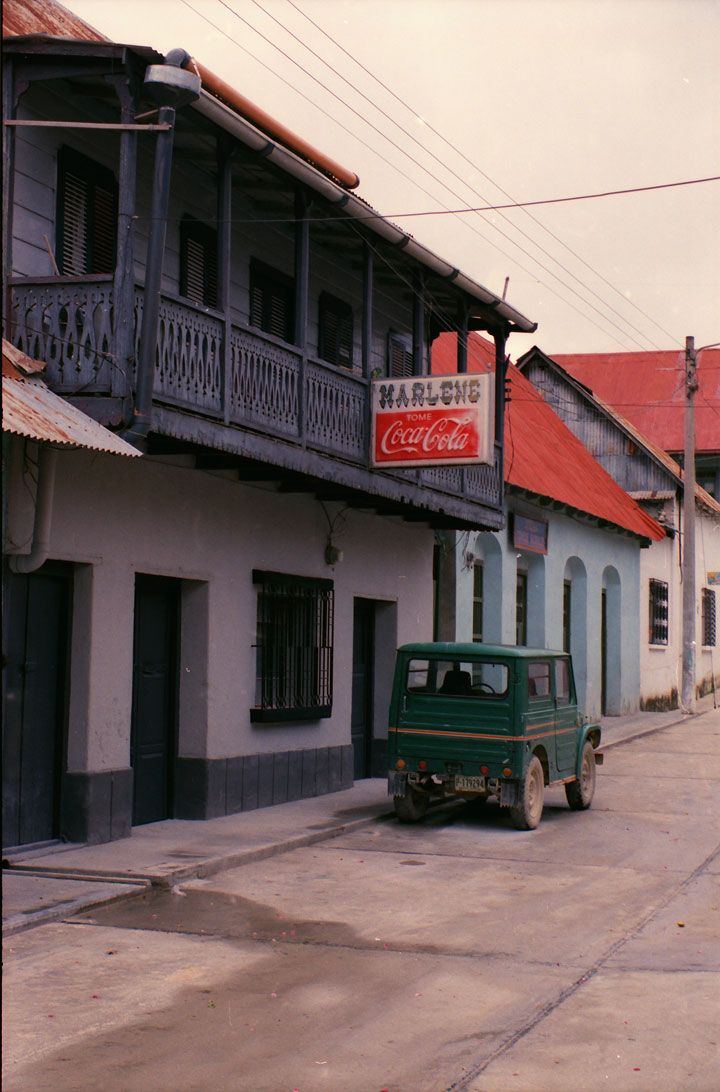
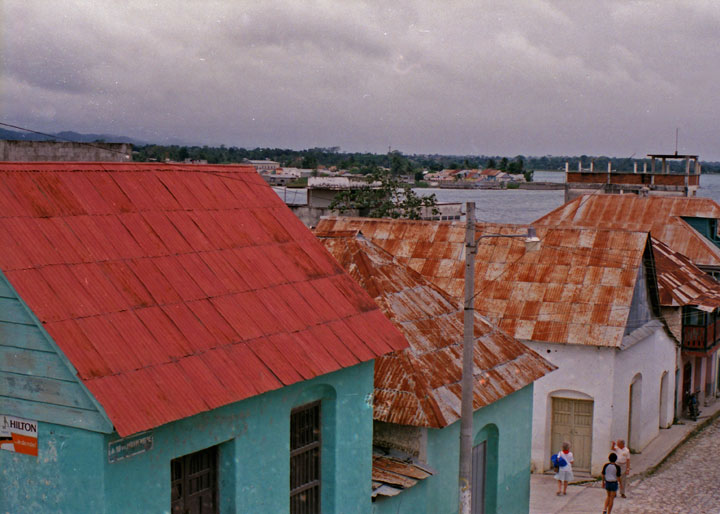
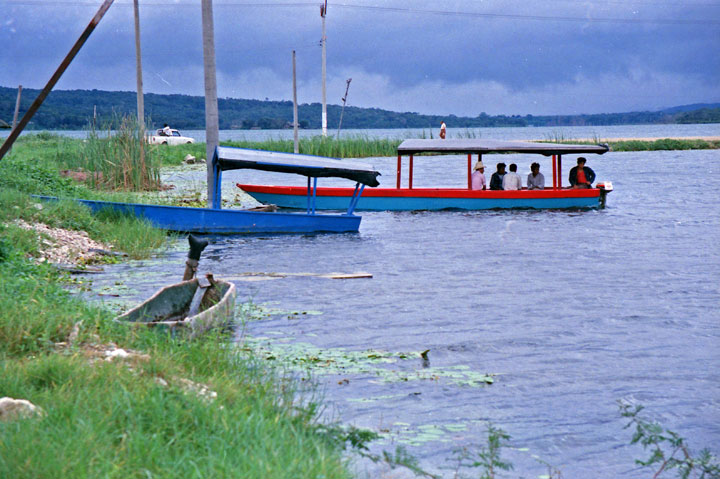
More Photos from Flores (2011)